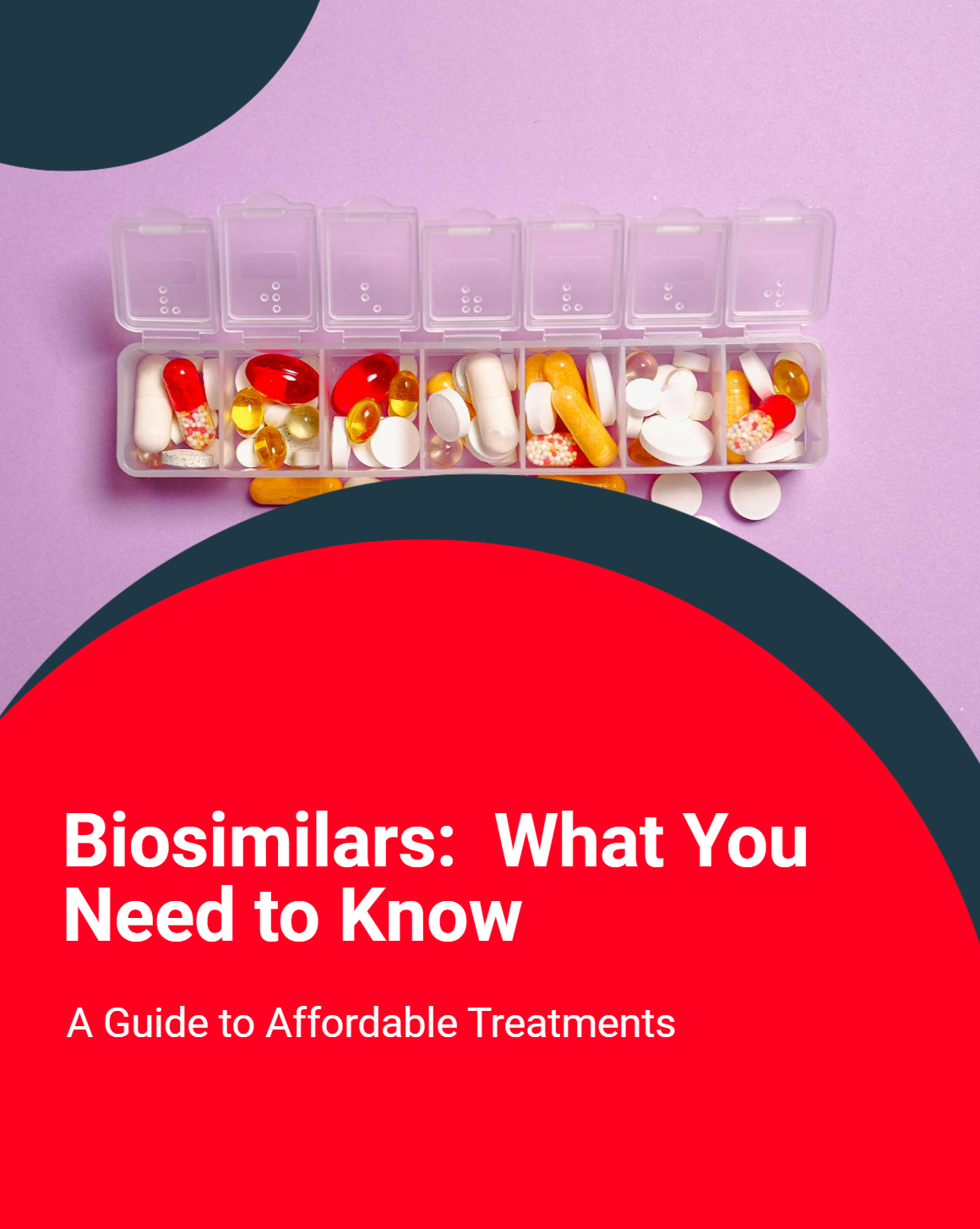
Biosimilars are a rapidly growing segment in the pharmaceutical industry, offering patients access to affordable treatment options for complex diseases. Understanding the relationship between biosimilars and biologics is crucial for both healthcare professionals and patients. In this comprehensive guide, we will explore what biosimilars are, how they differ from biologics, and why this distinction is so important in modern healthcare.
Biologics are a class of medications derived from living organisms or contain components of living organisms. These medications are typically larger, more complex molecules compared to traditional chemical drugs. Biologics include a variety of products, such as monoclonal antibodies, vaccines, gene therapies, and cell-based therapies. Some of the most commonly known biologics include treatments for cancer, autoimmune disorders, and chronic conditions like rheumatoid arthritis.
The production of biologics involves complex biological processes. Unlike traditional drugs, which are made through chemical synthesis, biologics are produced using living cells. These cells are genetically engineered to produce the therapeutic protein or molecule required. This process typically takes place in bioreactors, where the engineered cells are cultured to grow and produce the biological substance in large quantities.
Some well-known biologics include:
These treatments have revolutionized the management of various diseases but often come with high costs, which has led to the development of biosimilars.
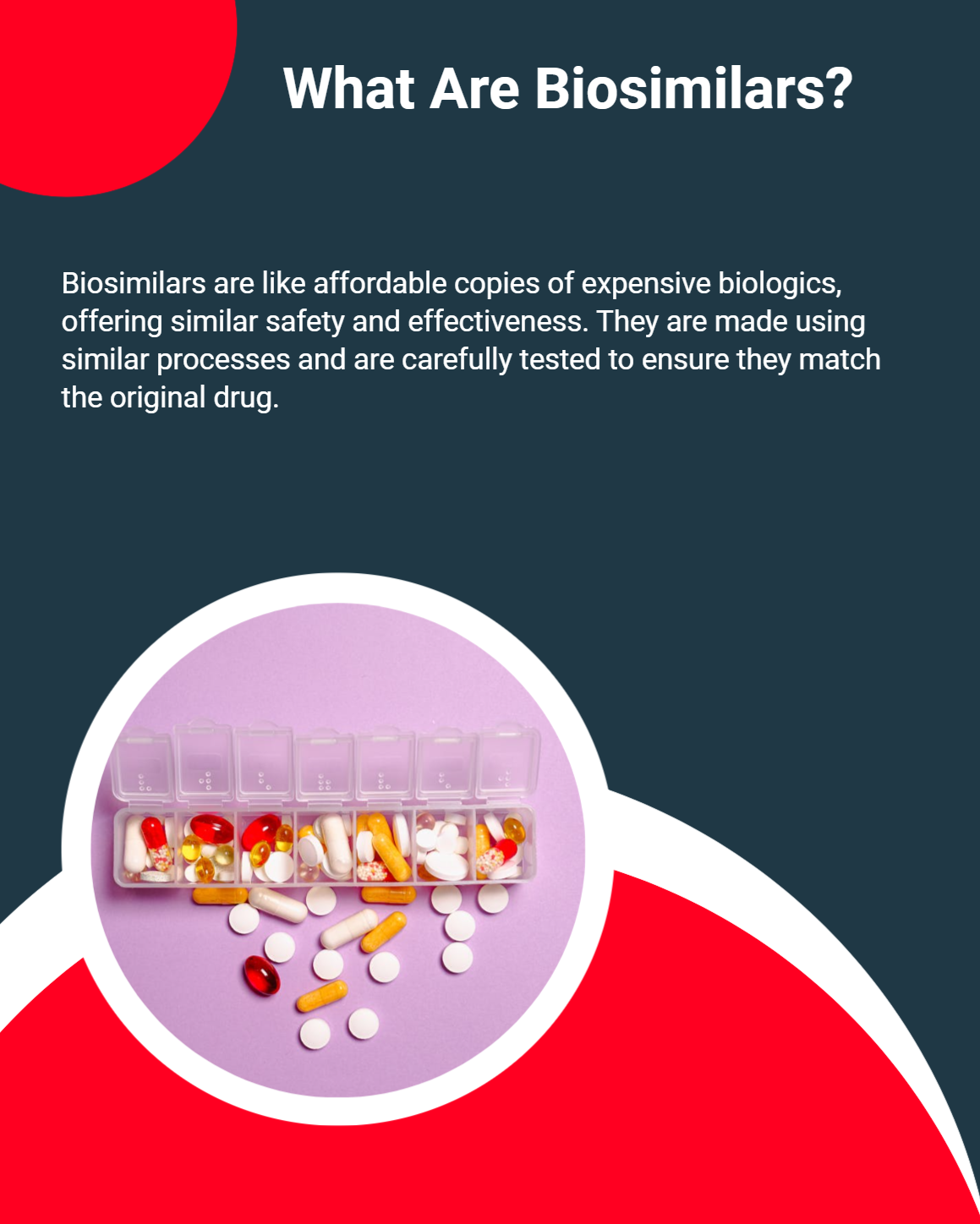
Biosimilars are biologic products that are highly similar to an already approved reference biologic. They are designed to match the reference product in terms of safety, efficacy, and quality. However, because biologics are derived from living organisms, small variations in their structure and behavior are inevitable. As a result, biosimilars are not exact replicas of their reference biologics, but they are still highly similar and produce the same therapeutic results.
Biosimilars are produced using a similar process to that of biologics. They are created by genetically modifying cells to produce the protein or molecule needed for treatment. However, since the production of biologics is highly sensitive to the environment, slight differences in the manufacturing process can occur. These differences are carefully studied to ensure that the biosimilar matches the reference biologic in terms of structure, function, and clinical effect.
Biosimilars are evaluated based on three key characteristics:
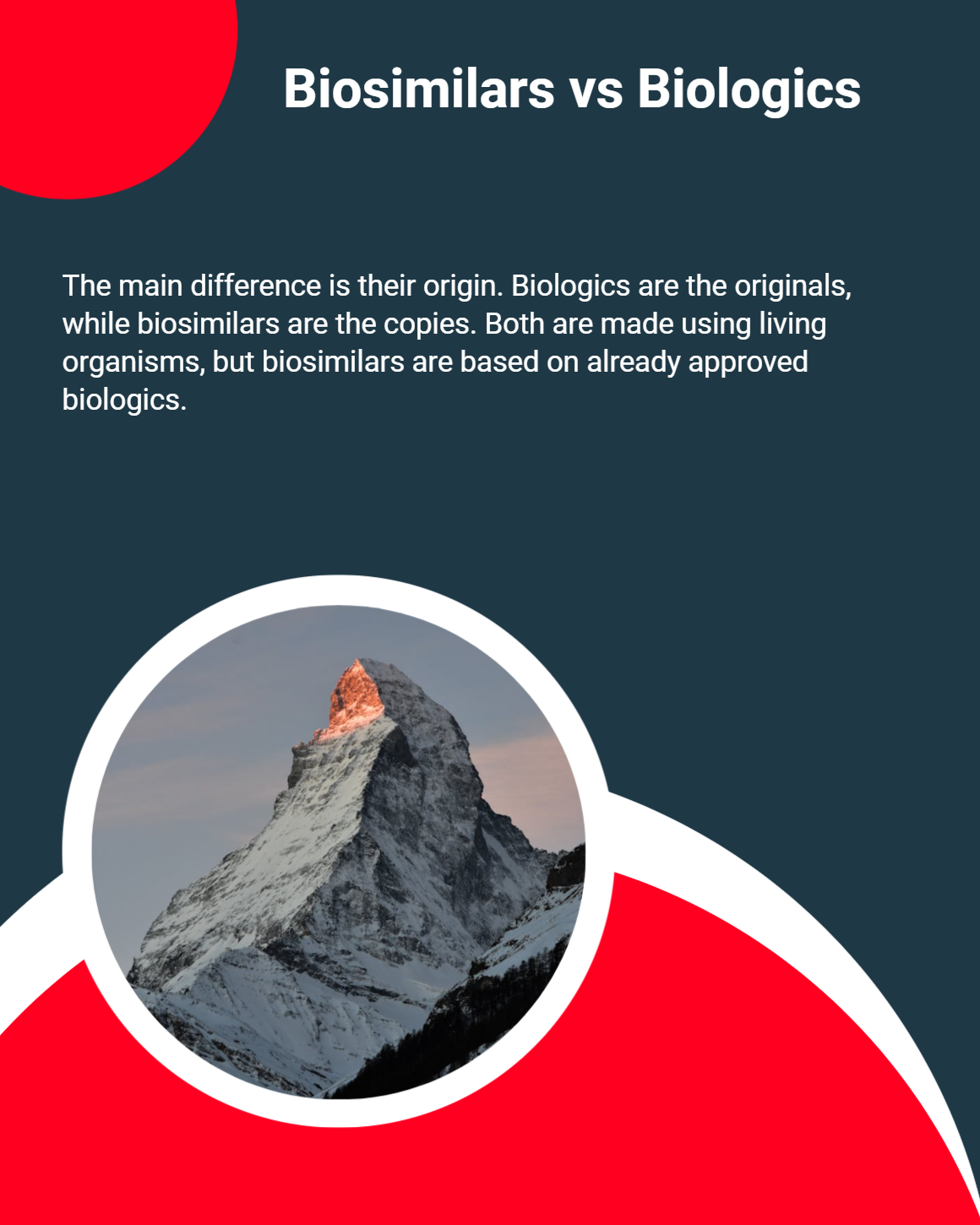
Understanding the differences between biosimilars and biologics is important for patients and healthcare providers. Although they share many similarities, there are key distinctions that influence their use in clinical practice.
The primary difference between biologics and biosimilars is their origin. Biologics are original, innovative drugs developed by pharmaceutical companies, whereas biosimilars are subsequent versions of these biologics. While both are derived from living organisms, biosimilars are modeled after biologics that have already been approved and are in use.
The approval process for biosimilars is different from that of biologics. Biologics require extensive clinical trials and years of research before they can be approved. Biosimilars, on the other hand, are not required to undergo the same lengthy clinical trials, as they are designed to match the reference biologic. However, biosimilars must demonstrate similar safety, efficacy, and quality through clinical studies before they can receive approval.
One of the biggest advantages of biosimilars is cost. Biosimilars tend to be significantly less expensive than their reference biologics, which can provide patients with more affordable access to essential treatments. The reduced cost comes from the fact that biosimilars do not require the same level of investment in research and development as the original biologic.
Immunogenicity refers to the potential of a drug to trigger an immune response in the body. Both biologics and biosimilars have the potential to cause immune reactions, but biosimilars are closely monitored to ensure they do not trigger unexpected immune responses. The approval process for biosimilars includes tests to assess their immunogenicity compared to the reference biologic.
As biosimilars enter the market, they provide competition to the original biologics. This competition can help drive down prices, benefiting patients who rely on these medications. Additionally, the introduction of biosimilars creates more treatment options for healthcare providers, allowing them to tailor therapies to individual patient needs.
Biosimilars offer several advantages over reference biologics, making them an attractive option for both patients and healthcare providers.
The most significant benefit of biosimilars is the potential for cost savings. Since biosimilars are generally less expensive than their reference biologics, they can provide patients with access to life-saving treatments at a lower cost. This can reduce the financial burden on healthcare systems and make expensive therapies more affordable for a broader range of patients.
By providing more affordable alternatives to biologics, biosimilars increase access to critical therapies. This is particularly important for patients in low-income or underinsured populations who might not otherwise be able to afford expensive biologic treatments.
The widespread use of biosimilars can ease the financial strain on healthcare systems. As biosimilars offer more cost-effective treatment options, healthcare providers can allocate resources more efficiently, allowing them to treat more patients without compromising quality.
While biosimilars offer many advantages, there are some challenges that must be addressed.
Regulatory bodies, such as the U.S. Food and Drug Administration (FDA) and the European Medicines Agency (EMA), have developed strict guidelines for the approval of biosimilars. However, gaining acceptance in the marketplace can be difficult, as some healthcare providers and patients may be hesitant to use biosimilars due to concerns about their safety and efficacy.
There is still a lack of understanding about biosimilars among patients and healthcare professionals. More education and awareness campaigns are needed to ensure that these treatments are appropriately prescribed and that patients are comfortable with their use.
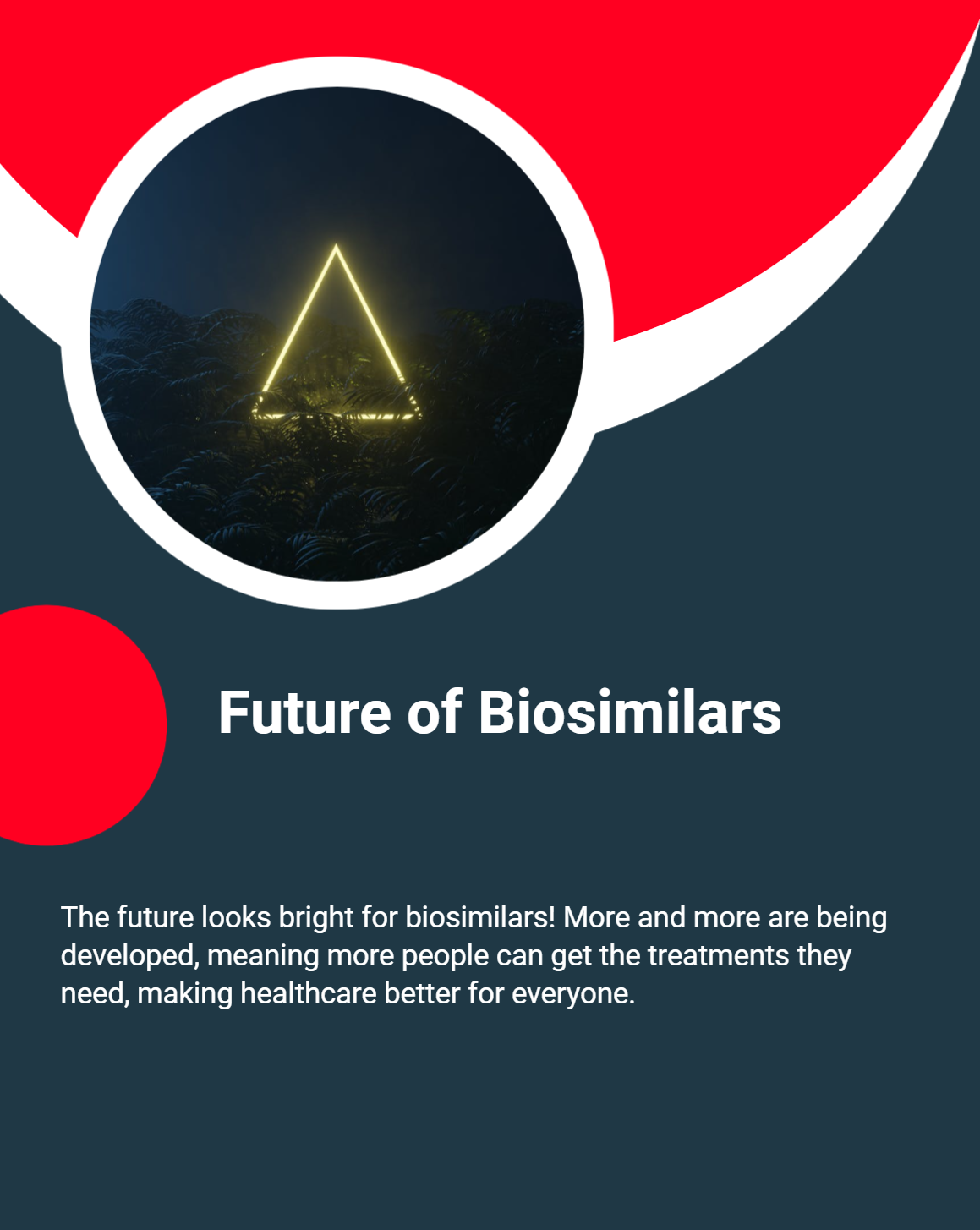
The future of biosimilars is promising. As more biosimilars enter the market, we can expect to see a greater variety of treatments for conditions such as cancer, autoimmune diseases, and diabetes. In the coming years, we will likely see increased adoption of biosimilars, driven by their affordability, safety, and effectiveness.
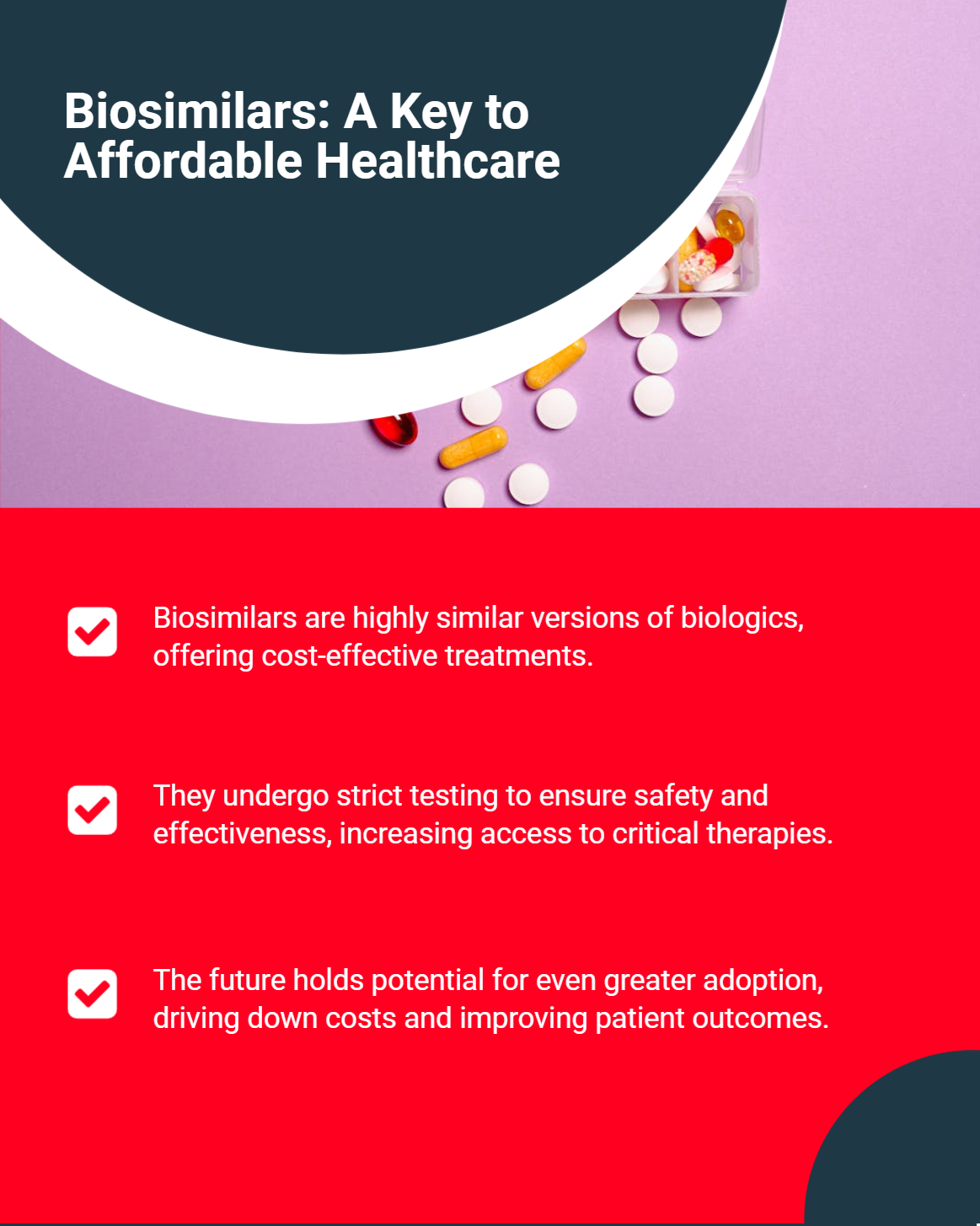
Biosimilars represent a significant advancement in the healthcare industry, offering affordable alternatives to expensive biologic treatments. Although there are differences between biologics and biosimilars, both are essential in the management of various diseases. As more biosimilars are developed and gain approval, patients will have more options for treatment, leading to better health outcomes and reduced healthcare costs.
Biologics are original, innovative medications made from living organisms, while biosimilars are highly similar versions of approved biologics. Biosimilars undergo rigorous testing to ensure they match the reference biologic in terms of safety, efficacy, and quality.
Yes, biosimilars are designed to be highly similar to biologics and are proven to be just as effective in treating the same conditions. They must meet strict regulatory standards to demonstrate their equivalence.
Biosimilars are typically cheaper because they do not require the same level of investment in research and development as the original biologics. This allows manufacturers to offer them at lower prices.
In many cases, biosimilars can be used interchangeably with biologics. However, this decision should always be made by a healthcare provider based on the patient's individual needs and medical history.
Biosimilars are considered safe when approved by regulatory agencies such as the FDA or EMA. They must undergo extensive testing to ensure they are safe and effective for patients.
 09.12.2024
09.12.2024